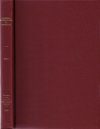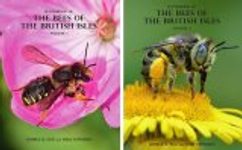About this book
A new synoptic classification of Formicidae is presented which divides the family into 21 extant and 4 extinct subfamilies, the former arranged in six subfamily groups. New diagnoses of all family-group names are given together with notes and comments on their taxonomy, systematics and status. A taxonomic history and bibliography of all familygroup and genus-group names is presented, indicating changes in status and placement through time, together with a complete list of major taxonomic papers that have contributed to our understanding of each taxon. A series of appendices deal with necessary adjustments in genus rank taxonomy, some aspects of morphology, formicid plesiomorphic states and appearance of taxa in the fossil record.
At subfamily rank taxonomic changes include the creation of two new taxa (Heteroponerinae and *Brownimeciinae), revived status of one (Amblyoponinae) and new status for four (Agroecomyrmecinae, Ectatomminae, Paraponerinae and Proceratiinae). At tribe rank there are six new taxa (Ankylomyrmini, *Haidomyrmecini, Lenomyrmecini, Liomyrmecini, Notostigmatini and Paratopulini), revived status for Myrmecorhynchini and new status for Probolomyrmecini. New synonymy at tribe rank includes Ponerini (= Pseudoneoponerini), Gesomyrmecini ( = Santschiellini, = *Sicelomyrmicini), Formicoxenini (= Ochetomyrmicini, = Solenomyrmini), Plagiolepidini (= Brachymyrmicini, = Bregmatomyrminii, = Myrmelachistini, = Prenolepidii) and Solenopsidini (= *Hypopomyrmiciti, = Pheidologitini).
New genus rank status and synonymy includes Anoplolepis (= Zealleyella), Aphaenogaster (= *Sinaphaenogaster), Camponotus (Colobopsis) (= Dolophra), Cerapachys (= Yunodorylus), Gauromyrmex (revived status), Monomorium (= Pharaophanes), Nesomyrmex (revived status) (= Caulomyrma, = Goniothorax, = Ireneopone, = Limnomyrmex, = Meia, = Tetramyrma), Oligomyrmex (= Neoblepharidatta), Plagiolepis (= Anacantholepis), Tapinolepis (new status) (= Mesanoplolepis), Temnothorax (revived status) (= Antillaemyrmex, = Croesomyrmex, = Dichothorax, = Icothorax, = Macromischa, = Myrafant, = Myrmammophilus), Tetramorium (= Apomyrmex), Stereomyrmex (= Willowsiella). A single new name is proposed, *Zhangidris, a replacement for *Heteromyrmex Zhang (1989), which is
preoccupied by Heteromyrmex Wheeler (1920).
Customer Reviews

































